Scarlet Firethorn - Care, Needs and Diseases of Pyracantha Coccinea
Scarlet firethorn is quite an easy plant to grow. If you make sure it has all it needs, you can expect it will reward you with a magnificent look for a long time. Pyracantha is often used as a hedge plant. One can achieve an interesting result with it. Do you want to know the requirements of a firethorn bush? Check how to care for this plant. Enjoy its looks every day.
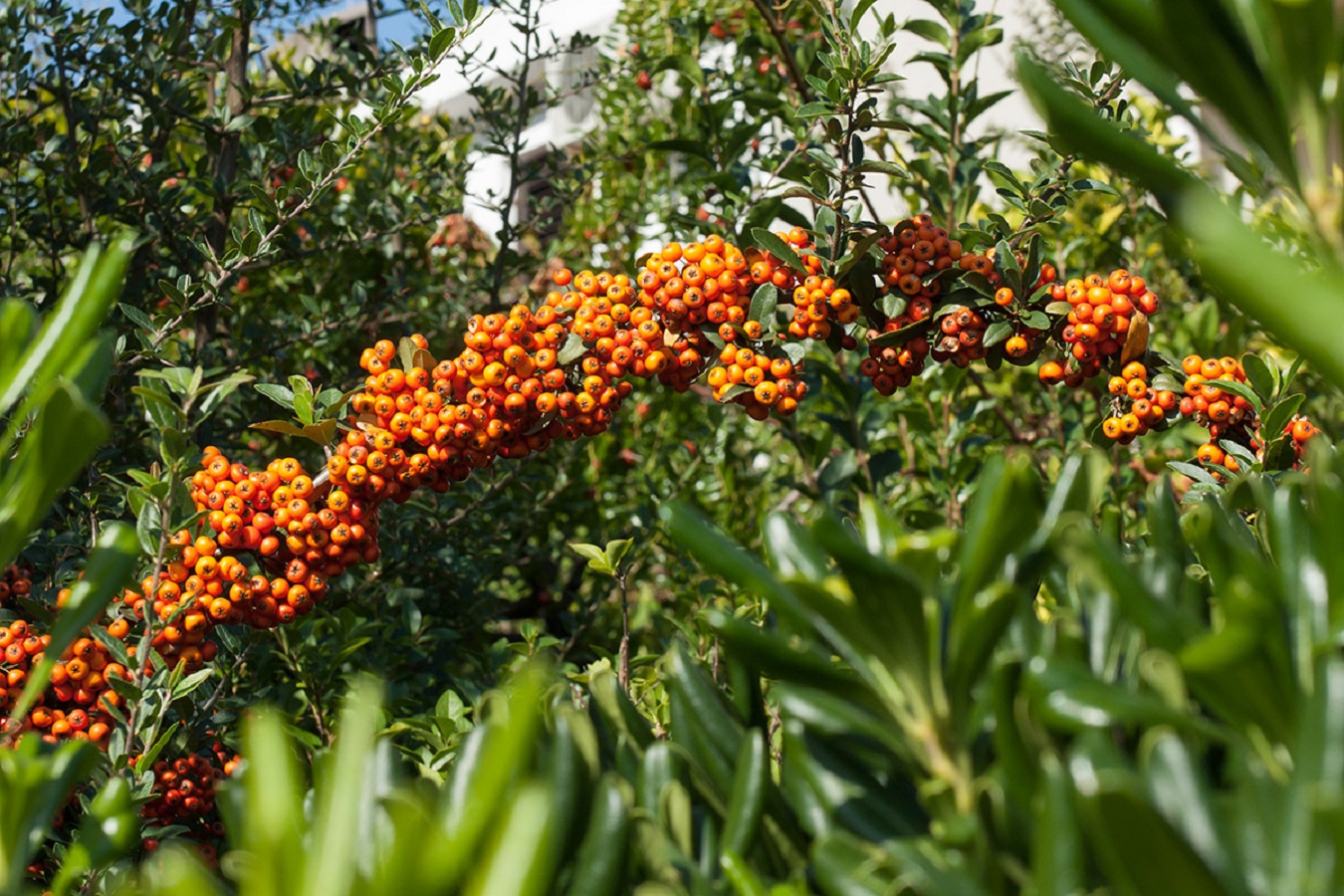
Scarlet firethorn – what kind of plant is it and what does it look like?
Scarlet firethorn (Pyracantha coccinea) is a leafy bush from the Rosaceae family. The plant grows naturally in south-eastern parts of Asia. It can also be found in some areas of Europe – its southern parts. But it’s popular as a cultivated bush everywhere in the world.
Pyracantha coccinea is a thorny bush of a strong green color. It can reach maximally 3-4 meters in size and spread even 1.5 meters wide. It has a thick and irregular habit. The leaves grow up to 4 centimeters long. Firethorns grown in gardens are definitely smaller than those encountered in their natural habitat.
In blooming season, the bush gets covered with very small flowers consisting of five petals, typically white-and-cream. The plant blossoms in June and July.
It’s not the tiny and beautiful flowers that are the main decoration of the plant, but fruits. Because of this, many people wonder whether pyracantha is poisonous. Fruits eaten directly from the bush might be a danger. For this reason, they shouldn’t be picked or eaten.
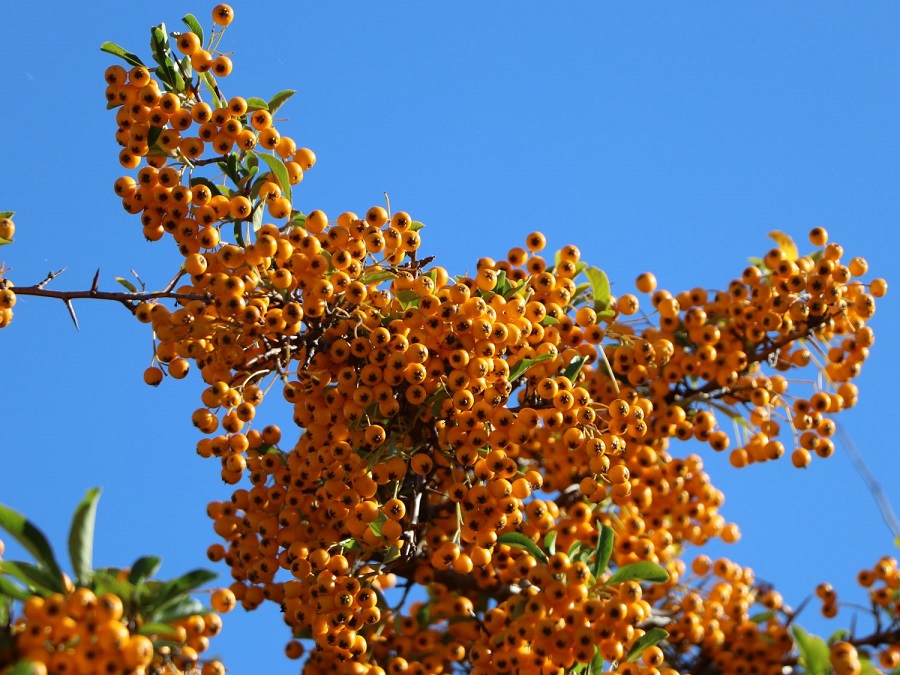
What are the most popular firethorn varieties?
Scarlet firethorn is a popular bush, often added as an extra decoration in home yards. Among many varieties, here are the most commonly grown types:
- Orange Glow – its fruits are orange-and-red,
- Red Column – it develops a lot of fruits in a strong red color,
- Soleil d’Or – its fruits are yellow, and leaves intense green.
Scarlet firethorn – a hedge plant?
Scarlet firethorn, as a low-maintenance bush, is a perfect hedge plant. All thanks to its features, more precisely height, thickness, and width.
To form a hedge from this plant, you have to stick to one simple rule about planting each bush. The spacing should be kept at 50 centimeters. The bush has to be regularly trimmed, if you want to achieve a particular shape.
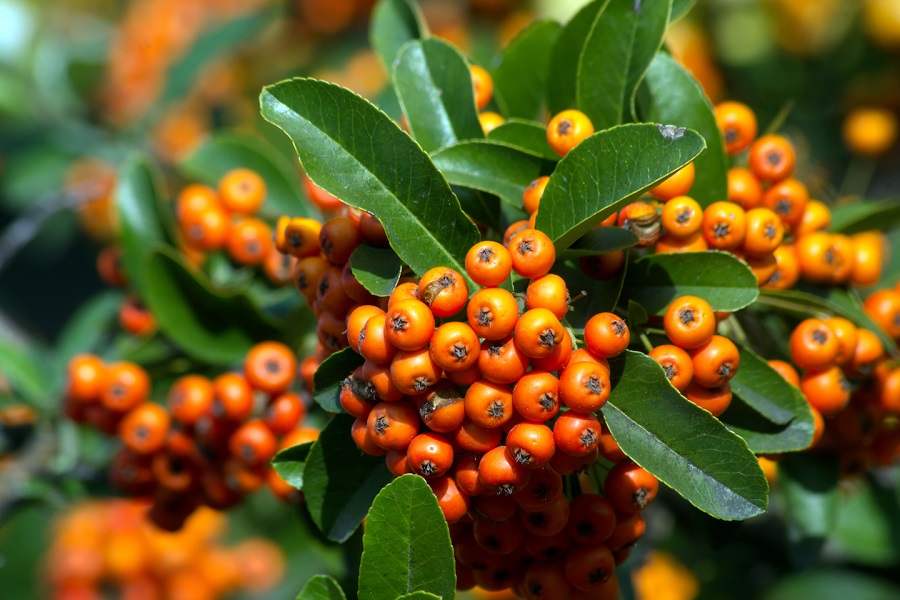
What is the best soil and location for a scarlet firethorn?
Pyracantha coccinea is very easy to grow. Nonetheless, it’s good to make sure to address its basic growth needs. The plant feels best in a sunny location, where it can grow fast and bloom develop an abundance of flowers. It will manage in half shade as well, but note it the flowers won’t be as plentiful.
When picking a place for a firethorn, also check if the soil is good. The plant likes fertile clay soils, as well as sandy clay soils. The pH level should be neutral or slightly alkaline.
Scarlet firethorn – growth rate
Pyracantha coccinea is considered a medium-fast growing plant. But keep in mind it likes dry areas, and it can manage perfectly fine during a dry spell. The leaves can turn brown and fall off in winter, but it’s not a reason to worry. Firethorns quickly regenerate and turn green again in spring. The plant is frost-resistant and can survive harsh conditions.
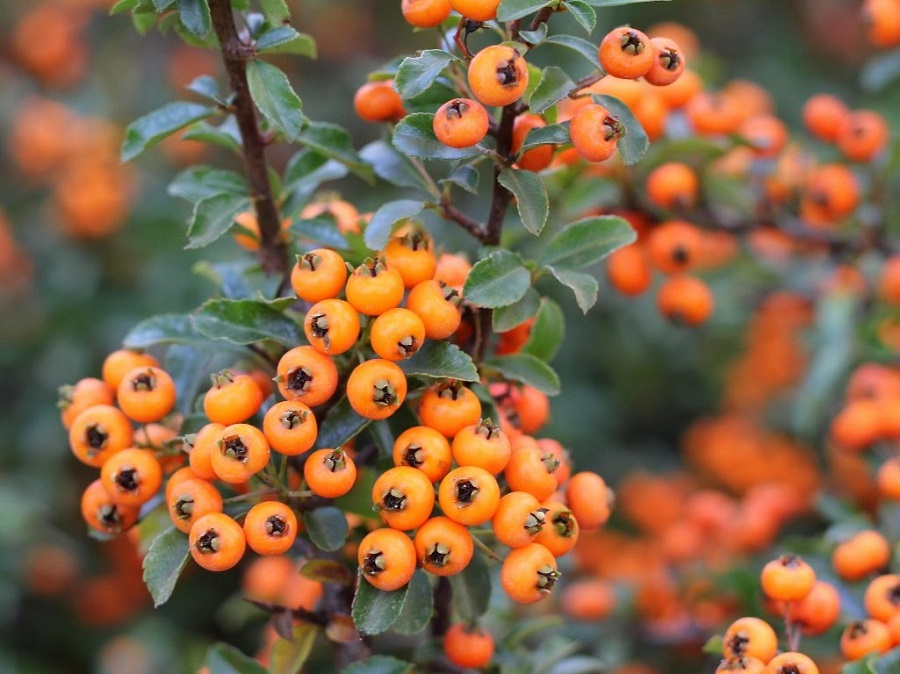
Scarlet firethorn – health benefits
Pyracantha coccinea not only looks beautiful in the garden, but also is a medicinal plant. The roots have body cooling and cleansing properties – they remove toxins. They are used against various infections. Firethorn roots are also a great painkiller for the following ailments:
- tooth aches, migraines,
- headaches,
- painful menstruation.
Folk medicine uses pyracantha leaves for treating gastritis. A brew from the leaves can treat diarrhea and an upset stomach.
Firethorn fruits are used in liqueurs and teas. They are valued for their calming properties.
Is pyracantha poisonous?
Scarlet firethorn has its name thanks to the fruits of a strong red color. They appear in late summer and remain through winter. It’s good to know that they shouldn’t be eaten raw, as they are slightly poisonous. You can eat them only after thermal processing.
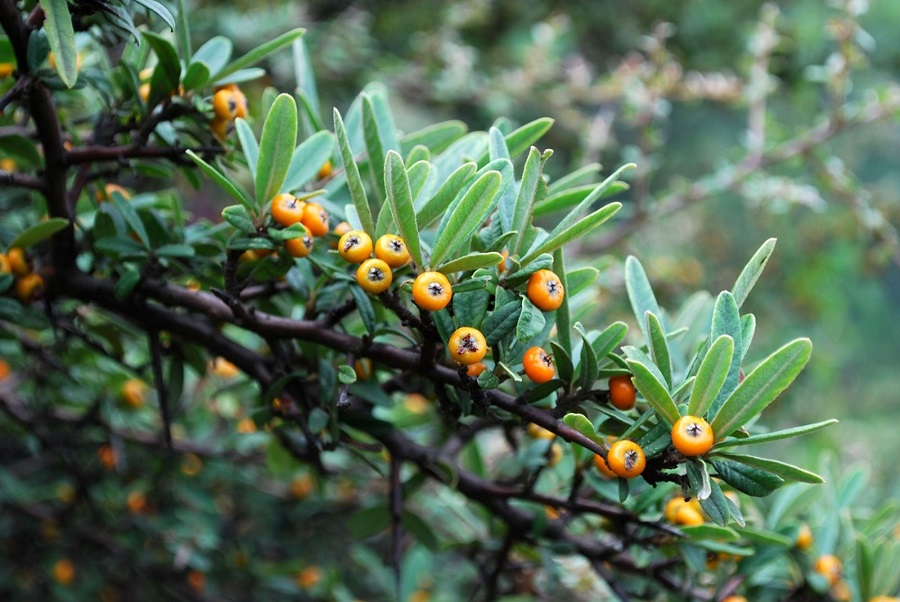
How to water a firethorn bush?
Scarlet firethorn is resistant to droughts. Regardless, remember to water it, especially if you planted it in full sun. Plan watering for the evening.
The plant should be richly watered right before winter. This way, it can accumulate water needed for survival until the next vegetation period.
Does pyracantha need fertilizing?
Bushes planted in fertile ground don’t need to be fed. You can use a rose fertilizer from time to time, to strengthen the shrub. The beginning of a vegetation period is the typical time for using fertilizers. That’s when the plant regains energy, and as a result, you can expect it to grow faster after winter.
How to propagate a scarlet firethorn bush?
The green sprout method is the easiest way to propagate this bush. For this purpose, you need to cut a green 15-centimeter long top branch with at least two nodes. Cut the seedling under the node, and notch the stem over it. Then, you can lace the twig, e.g. using a special rooting product. Put the seedling in a pot filled with peat and sand. After three months, it should develop enough roots to plant it in a designeted spot.

When to prune a pyracantha coccinea?
Scarlet firethorn should be regularly trimmed to give it a shape. Pruning is typically done in March. That’s when one should remove any dead, frozen or damaged branches.
If you want to tame the plant, repeat pruning every few months – in June, when the firethorn stops blooming, and at the end of August.
The most common diseases of a scarlet firethorn
Scarlet firethorns are vulnerable to fungal diseases. Pay a special attention to the plant if the summer has been rainy. If so, you can use antifungal products as a preventative measure. This way, you can protect the firethorn from fungi such as grey mold. All fungal diseases are dangerous, especially to firethorns planted as a hedge.
Scab is another common disease of firethorns. It attacks the entire plant – the leaves develop spots, and one can observe protrusions and damages on branches and stems. Fruits of a firethorn dealing with the fungus become dark, dry and they fall off. The only remedy involves removing all the infected parts of the plant and spraying the plant with special products.
Fire blight is yet another potential problem. It appears in the plant’s bark. It can also be observed on leaves, which get twisted, and stems, which gradually die back. If the disease appears, the infected bushes have to be cut down as soon as possible.
Is firethorn prone to any pests?
Aphids are popular pests that can attack a pyracantha coccinea. They are typially observed in summer. Aphids are quite easy to get rid of. Just spray the plant with the right product until the problem disappears. At initial stages, you can decide on natural remedies.
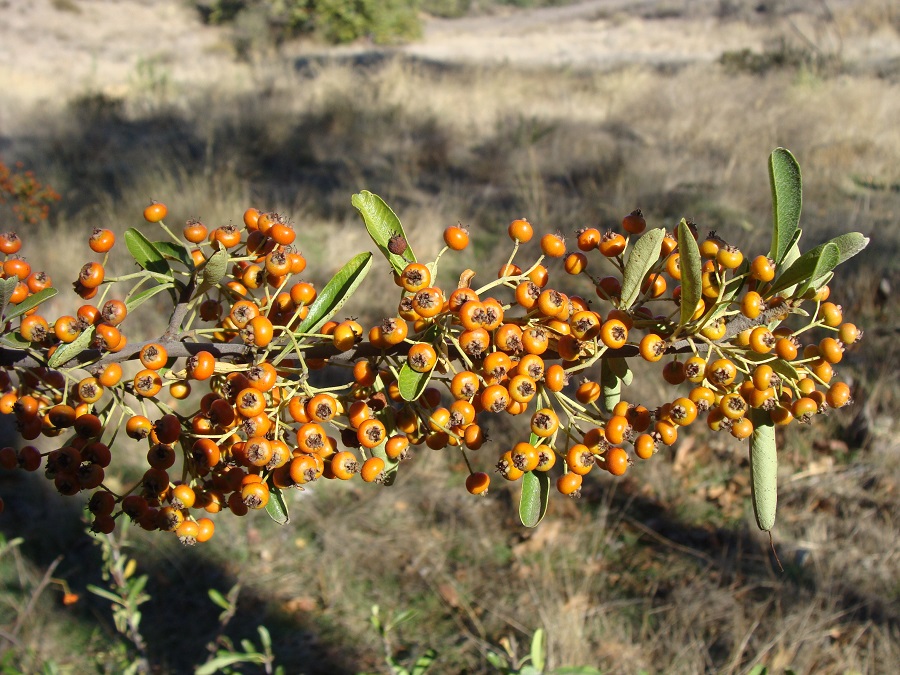
📍 How fast does firethorn grow?
Scarlet firethorns have an average growth rate. The yearly increase is usually 10-20 cm. The shrub grows to the sides as well. For this reason, its shape has to be corrected by trimming.
📍 Firethorn hedge – what spacing?
Pyracantha coccinea doesn't like transplanting, so you have to pick its correct location right away. If you want to use the plant in the garden, keep the spacing of at least 50 centimeters.
📍 When to plant scarlet firethorn?
Scarlet firethorn shouldn't be planted during droughts or hot weather. The end of summer and the beginning of fall is the best time for planting a pyracantha bush. Don't delay the decision – if you plant a firethron too late, it won't develop resistance to frost before winter.
📍 How to propagate firethorns?
Firethorns are easy to propagate. Just use the quick method with green cuttings and root them in soil.
Featured articles




